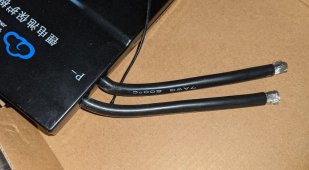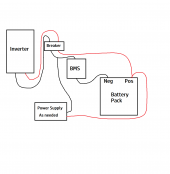LOL this happened to my 12V when i tried to jumpstart my BMS... big bright spark, life flashed before my eyes and I thought i had died hahaha (is it just me or does the thought of working with LFP banks that can dump >30kW's of current instantaneously scare the crap outta other people too?)

this happened tho cos my P- on the BMS was also connected to other banks in parallel, as well as the inverter (ie: what the final setup will look like).. so, SOMETHING in the system (probably inverter tbh) has a giant capacitor in there and it's obviously not 12V, so when this tiny 12V battery got introduced to the BMS, there must've been a huge voltage potential somewhere else that suddenly did this...
That said though, no damage to the BMS (that I can tell), it did start as expected... inverter didn't throw a code, and this battery survived too (it's a small 12V 10Ah with a tiny BMS inside), the battery itself continued to work at 12V, the internal BMS wasn't fried... everything seems to work just fine. I just wasnt expecting a massive zap thats all

this happened tho cos my P- on the BMS was also connected to other banks in parallel, as well as the inverter (ie: what the final setup will look like).. so, SOMETHING in the system (probably inverter tbh) has a giant capacitor in there and it's obviously not 12V, so when this tiny 12V battery got introduced to the BMS, there must've been a huge voltage potential somewhere else that suddenly did this...
That said though, no damage to the BMS (that I can tell), it did start as expected... inverter didn't throw a code, and this battery survived too (it's a small 12V 10Ah with a tiny BMS inside), the battery itself continued to work at 12V, the internal BMS wasn't fried... everything seems to work just fine. I just wasnt expecting a massive zap thats all






